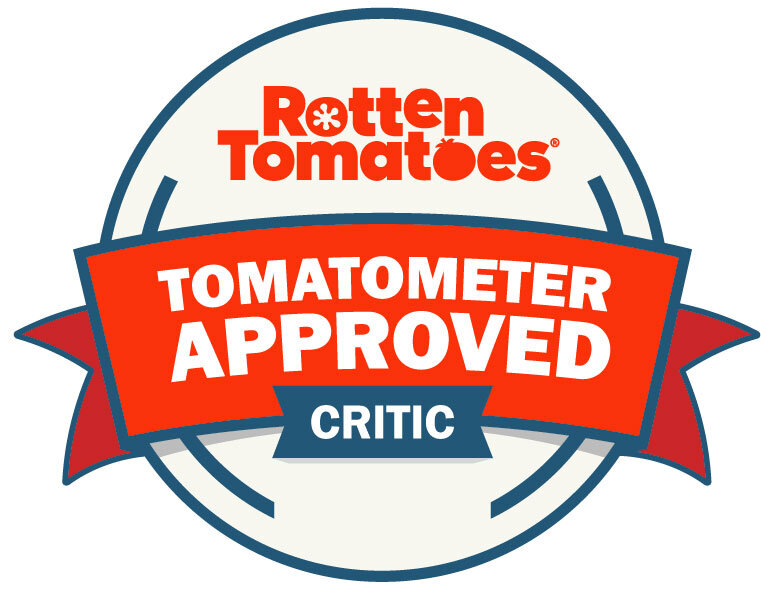Upon the Edge of No Escape
2009 // Greece // Giorgos Lanthimos // October 31, 2010 // Theatrical Print (Webster University Moore Auditorium)
[Dogtooth was featured in a limited engagement on October 29-31, 2010 at the Webster University Film Series.]
A- - Dogtooth leaves an unexpected chill in its wake, a psychological and moral draft capable of coaxing gooseflesh hours after the credits have rolled. With striking compositions and a relentless tone of agonizing apprehension, the third feature from Greek director Giorgos Lanthimos picks at your skull until it finds an opening, and then burrows its way in deep. The film defies easy categorization: part NC-17 parable, part matter-of-fact thriller, part cinema of the absurd, and part pitch-black allegory. It is, without question, one of the most confrontational and exigent works of cinema in the past year, alongside Michael Haneke's similarly brilliant The White Ribbon, with which it shares many themes. That latter film's setting—a Lutheran German village on the eve of the Great War—was fundamental to Haneke's pointed critique of purity myths, but Lanthimos' explorations are broader and more ambivalent. Accordingly, his stage is both more familiar and slightly abstract. Most of Dogtooth takes place in a sprawling, somewhat outdated country domicile with a tall wooden fence, where passing airplanes cast shadows on a verdant, well-trimmed lawn. The building's banal appearance conceals a twisted household whose circumstances the outside world would regard as a waking nightmare. Not that what anyone thinks means a damn to the dictatorial Father (Christos Stergioglou): he's doing everything in his power to keep the world beyond the fence at bay.
It is apparent from the first scene that the abnormal is commonplace within this house, as three young adult siblings (Aggeliki Papoulia, Hristos Passalis, and Mary Tasoni) listen to an educational audio tape that explains illogical rules and presents erroneous vocabulary definitions (e.g., the leather armchair in the living room is a "sea"). Driving home the discomfiting otherness of the household, the children (and that is plainly how we are to think of them, despite their age) then propose scalding themselves as an endurance test. Other strangeness emerges as Lanthimos slowly and fitfully reveals the routine of the household. The Father and obedient Mother (Michele Valley) subject the children to an array of bizarre exercises and tests, encouraging physical fitness and mental discipline, all while scrupulously shielding them from influences of the outside world. The siblings' whole existence begins in their little bedrooms, where the number of cheap stickers on their headboards tracks their "progress," and ends at the property line, beyond which lies a perilous wilderness (or so they are told) inhabited by an invisible Other Brother and ravenous, prowling monsters called "cats". The parents spin peculiar lies and engage in apparently meaningless deceptions: plastic toy jets are presented as real airplanes that have fallen from the sky; wriggling fish are secretly released into the pool for the children to discover, whereupon the Father hunts them with a spear gun and snorkel; an LP of Sinatra crooning "Fly Me to the Moon" is translated to the children as their Grandfather speaking from beyond the grave.
Underneath all this weirdness runs a simmering strain of psycho-sexual dysfunction and terrifying abuse. The children (and Mother) are periodically ordered to get down on all fours and bark like dogs. The Younger Sister offers to lick her family members—on an elbow, shoulder, or finger—in exchange for petty gifts and favors. The Father routinely brings home a security guard (Anna Kalaitzidou) from his workplace and pays her to have perfunctory sex with the Son (the daughters, pointedly, are not afforded such treatment). Everyone seems perpetually anxious, and justly so, as brutal violence flares up without warning. Like Twin Peaks' Sarah Palmer, the viewer is prompted to keen, "What is going on in this house?!" Are the parents cruel fanatics who have established their own demented home schooling methods? Are they researchers conducting a long-term psychological experiment? Are the Son and Daughters even their biological children, or are they kidnapping victims? None of these questions are clarified within the film, not that they need to be. Lanthimos' approach to the story is restless and murky, but to an alert observer such narrative vagueness serves as a signpost rather than an obscurantist defect. The director renders moot questions about the parents' intentions or the precise origin of this monstrous state of affairs. His interests lie in establishing the absolutism of the parents' eccentric regime, and in documenting the obdurate impulses and fateful missteps that eventually result in the splintering of that regime.
Insofar as Dogtooth has a story, it is a straightforward two-part scenario, lacking the ebb and flow of a more conventional dramatic narrative. In the first part, the specifics of the household's rules and dynamics are established. In the second, a conflict is introduced, one that in due course subverts and annihilates the household's carefully maintained order. That conflict initially manifests as videocassettes brought into the house by the security guard-cum-prostitute, who barters them away to the Older Daughter. The children are familiar with pornography—their parents openly consume it—but these videos are something far more radioactive in their hermetically sealed world: Hollywood movies. In what proves to be Dogtooth's solitary gesture of endearing human warmth, the Older Daughter quickly memorizes every line of dialog from the films, and soon she is spurting juice "blood" from her mouth in imitation of Rocky Balboa, or babbling in her affectless but contented way through a Richard Dreyfuss monologue from Jaws. (In a later, distinctly Wes Anderson-tinged scene, she transforms an awkward dance performance into a muddled homage to Flashdance.) Needless to say, the introduction of a virus as decadent as the Hollywood blockbuster does not bode well for anyone.
Approached purely as a stark thriller about an unconventional captors-and-captives scenario, Dogtooth is potent filmmaking. While the characters and their interactions are frequently disturbing or just downright baffling, the film itself hews to a determined realism in its presentation, lending sickening immediacy and intimacy to the events that unfold. Lanthimos' style is most defined by its absence of style: unadorned, disciplined, and deliberate. His formal flourishes are sparing: the use of shallow focus to signal the trajectory of action, and framing that frequently severs heads and limbs in contravention of the usual rules of cinematography. Such choices harmonize with the film's gnawing tone of fear and sexual unease, prodding the viewer to see the world as an anxious child might, full of threatening vectors and organs with their own frightening agency.
While it is an effective and visceral tale of suspense, the indefinite quality of the film's contours encourages deeper study. As with any fine work of absurdism, the target of Dogtooth's criticism resists easy identification. The film can be described as an attack on any number of norms: the institution of the family, cultural indoctrination, patriarchy, religiously motivated sexual repression, autocratic government, or any system that seeks to control its component-participants. The tyranny on display in Dogtooth is of the most insidious two-pronged type: inflexible, retributive, and violent, and yet able to cunningly employ reward, rivalry, and anticipation for its own malevolent (and typically inscrutable) purposes. The viewer cannot fathom the endpoint of the parents' sick system of child-rearing, but the Father plants a germ of illusory hope as a means of control: when a child's canine tooth (the titular "dogtooth") falls out, he or she is ready to venture beyond the fence.
Despite the film's arid surface, its cinematic antecedents are always squirming just out of sight, their relevance highlighted by the Older Daughter's obsession with the pop-cultural artifacts that fall into her hands. George Orwell's fingerprints are all over the film's thick allegorical slatherings, but so are Patrick McGoohan's. Echoes of The Prisoner are apparent in the oddly arbitrary quality of the household's deceits and rules, its curious linguistic patterns, and its mask of suburban bliss and hopelessly square pleasures (Sing-a-Long Night! Cake Night!). The family's canine braying brings to mind the animalistic fits of David Lynch's characters. Like Blue Velvet's fresh-faced amateur detective, Jeffrey Beaumont, the Other Daughter begins to discern the shadows of a strange world long hidden from her. The family of Dogtooth vibrates to the same pitch as numerous depraved Lynchian families, from those in The Grandmother to Fire Walk With Me, but it also calls back to the misfit tribes of 1970s horror and exploitation cinema. That era was rife with willfully isolated clans of fanatics (The Wicker Man), cannibals (The Texas Chainsaw Massacre), and mutants (The Hills Have Eyes) whose abnormal value systems inevitably shocked and disgusted interlopers. Unlike those films, Dogtooth turns a sympathetic gaze inward. For all its chilliness, Lanthimos' film thus reveals an astonishingly raw and bloody horror at its heart: the horror of being a child who was raised in Hell and told it was Heaven.









